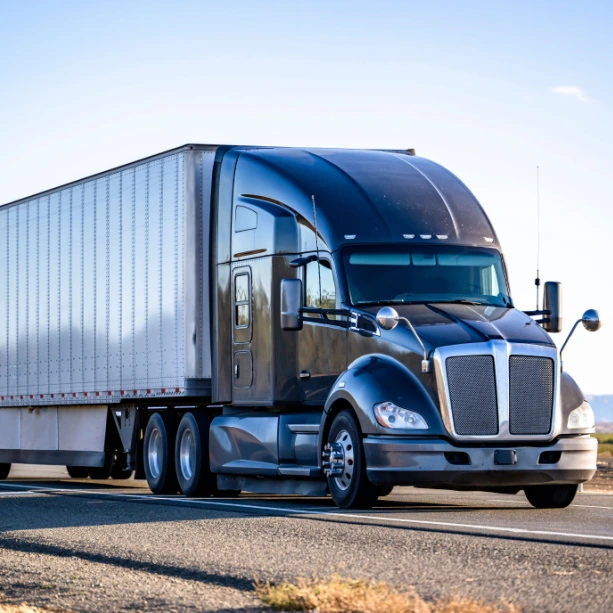In today's fast-paced and highly competitive world, businesses need to ensure that their supply chain operations are as efficient as possible. One of the most critical components of an efficient supply chain is transportation. However, managing transportation can be challenging, especially regarding the management of trailers. Trailers are some of the most valuable assets for logistics operations, but they can also be some of the most difficult to manage. Fortunately, trailer tracking has emerged as an effective solution to this problem. In this blog, we'll take a closer look at what trailer tracking is, why it matters, and some best practices to ensure its effectiveness.
What is Trailer Tracking?
Trailer tracking is the process of using technology to track trailers as they move throughout the supply chain. Trailer tracking solutions typically use tracking devices mounted on the trailer that communicate with a central server using GPS, cellular, or satellite networks. The tracking devices transmit location information in real time to increase the visibility of trailers.
Increase Your ROI by Investing in AirFinder Everywhere
- Loss Prevention. Reduce the amount of loss that occurs during the supply chain process
- Location Coverage. AirFinder Everywhere uses a combination of GPS, Cellular, and WiFi to determine location everywhere
- Security Alerts. Know when a delay in shipment has occurred so the problem
can be addressed immediately.
Types of Trailer Trailer Tracking Solutions
Depending on the type of trailer tracker you use, different technologies will be used to determine the location of your trailer.
GPS
GPS trailer tracking is the most common technology choice in the industry. This well-known option has the most accuracy but also drains batteries the quickest, especially in areas with little to no service. Running through batteries eventually adds up, leading to high operational costs. It’s not recommended to use a GPS tracker for trailers on their own.
Cellular
Cellular is another well-known technology for asset tracking. These systems use cellular networks to transmit tracking data. This requires less battery power than GPS, but there’s a cost in terms of accuracy. Since cell towers can be spread apart in some areas, the location may be less accurate or altogether incomplete.
WiFi Sniffing
WiFi sniffing involves the tracking devices searching the area for nearby access points to determine the location. Using WiFi sniffing does not mean the tracking system connects to WiFi; it just uses the access points' location to determine location through the process of triangulation.
Combining Location Technologies
Using any of these technologies on their own is not the wisest decision. Rather, combining them to work together to fill in the areas where the others fall short offers the best accuracy and cost. For example, WiFi sniffing conserves battery life and provides accurate location data, but if no network is nearby, the combined system can instead use cellular or GPS to determine location.
Components of Trailer Tracking Systems
Trailer tracking systems consist of three main components: devices, sensors, and software. Each has a necessary role to play in an effective trailer tracking system; each must be considered when choosing an ideal solution.
Trailer tracking devices are the physical devices mounted on the trailer. These devices provide location information by transmitting data to a central server. Tracking devices can vary in size depending on the needs of the company.
Sensors are components that are embedded in the tracking devices to monitor the condition of the environment to provide additional data and assurance. For example, sensors can be used to monitor the temperature of refrigerated trailers, ensuring that food or other temperature-sensitive goods remain at the proper temperature during transit. Sensors can also be added to monitor shock, acceleration, and other environmental conditions as needed.
After tracking devices and sensors collect the data, software is used to visualize and analyze the data so it can be put to good use. The software can provide insights into the performance of the trailers and help logistics and transportation companies make data-driven decisions to improve the overall efficiency of their processes.
Why Does Having a Trailer Tracker Matter?
Increased Visibility
Maintaining visibility of your supply chain always includes maintaining visibility of your trailers. Knowing the location of your trailers helps to ensure on-time delivery and reduces delays, which improves customer satisfaction. In addition, the visibility of trailers helps to prevent permanent loss.
Increase Asset Usage
Knowing the location of trailers helps facilitate improved asset utilization. If logistics operators know where their trailers are, they can optimize the use of their assets based on that knowledge. They can identify trailers that are not being used and redirect them to areas where they are needed. This helps to reduce costs and improve efficiency.
Increased Security
Theft is a common concern for logistics operators that manage trailers. Thieves know they can make money just from selling a stolen trailer; it doesn’t matter what they contain, the trailer itself has value. If companies attach a tag to their trailer for visibility, they don’t have to spend time searching for a trailer they may never recover or spend money on a replacement; instead, they can identify the stolen trailer's location and recover it immediately.
Reduced Costs
The visibility and security a trailer tracker provides ultimately lead to savings and reduced spending. Labor hours aren’t wasted searching for the trailer, and there is no need for money to be spent on a new trailer to replace a lost or stolen one. Logistics tracking also allows companies to optimize processes, which can lead into an overall reduction of operational costs.
Best Practices to Ensure a Successful Trailer Tracking System
Implementing a Tracking Policy
A tracking policy should be developed to ensure the effective use of your trailer tracking system. An ideal policy outlines how tracking devices should be used, what data will be collected, and how that data will be managed and analyzed. The tracking policy should also include guidelines for the maintenance and replacement of tracking devices and other hardware components.
Regular Device Maintenance
Regular device maintenance is essential to ensuring the continuing effectiveness of your trailer tracking system. Logistics operators should establish a regular maintenance schedule for the system’s component tracking devices. This maintenance should include checking the battery life of devices, ensuring that they are correctly installed, and replacing damaged devices as needed. By reliably maintaining tracking devices, companies can ensure that those devices are working properly and providing accurate data.
Which Trailer Tracking Solution Should You Use?
There are a few features that enhance the capabilities of any given asset tracking solution. Each of these goes above and beyond the basic needs of just seeing the location. Some of these features include:
Geofencing
Geofencing is a feature that allows companies to set up virtual boundaries around specific geographic areas. This feature can then be used to send alerts if a trailer enters or exits the specified area. By using geofencing, companies can ensure that trailers are not removed from the premises without authorization.
Temperature Monitoring
Temperature monitoring is essential for trailers that transport perishable goods. This feature can be used to create alerts if the temperature of a trailer falls outside the necessary range for the goods it contains. With this type of condition monitoring, companies can ensure that the temperature of refrigerated trailers remains within the acceptable range at all times, preventing spoilage or other product damage.
Our AirFinder Everywhere solution provides logistics operators with the real-time location of their trailers. AirFinder’s trailer tracking technology combines GPS, Cellular, and WiFi sniffing to extend battery life while maintaining accuracy. Our solution also allows you to monitor the temperature of trailers transporting temperature-sensitive goods. The sensors can even monitor shock and acceleration for the companies that will benefit from that data. You also have the option to set up a geofence around your facility with alerts so you’re notified when the trailer leaves the zone. This way, if a trailer that wasn’t supposed to be moved is moved, you can retrieve it quickly.
Conclusion
Our AirFinder Everywhere solution provides logistics operators with the real-time location of their trailers. AirFinder’s trailer tracking technology combines GPS, Cellular, and WiFi sniffing to extend battery life while maintaining accuracy. Our solution also allows you to monitor the temperature of trailers transporting temperature-sensitive goods. We also employ sensors to monitor shock and acceleration for the companies that will benefit from that data. Additionally, you have the option to set up a geofence around your facility with alerts so you’re notified when the trailer leaves the zone. This way, if a trailer that wasn’t supposed to be moved is moved, you can retrieve it quickly.
Effective trailer tracking is essential to maintaining successful logistics operations. Lack of visibility of trailers leads to higher costs and lower customer satisfaction. As technology continues to advance, trailer tracking systems will become even more sophisticated, providing even greater visibility into supply chain operations. Book a demo with our team to learn more about the benefits of trailer tracking and how we can help you track your trailers.





